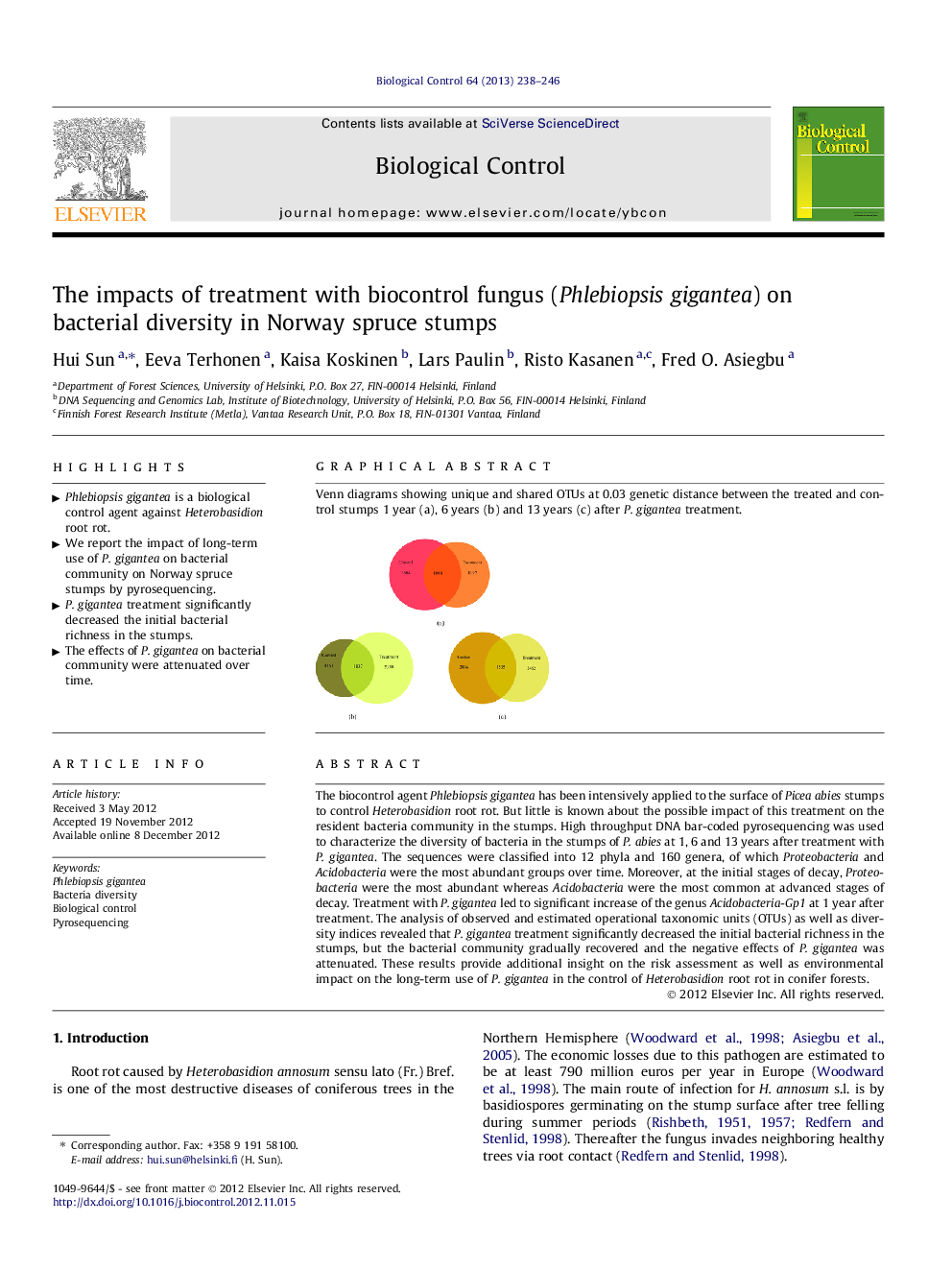| Article ID | Journal | Published Year | Pages | File Type |
|---|---|---|---|---|
| 6372784 | Biological Control | 2013 | 9 Pages |
The biocontrol agent Phlebiopsis gigantea has been intensively applied to the surface of Picea abies stumps to control Heterobasidion root rot. But little is known about the possible impact of this treatment on the resident bacteria community in the stumps. High throughput DNA bar-coded pyrosequencing was used to characterize the diversity of bacteria in the stumps of P. abies at 1, 6 and 13Â years after treatment with P. gigantea. The sequences were classified into 12 phyla and 160 genera, of which Proteobacteria and Acidobacteria were the most abundant groups over time. Moreover, at the initial stages of decay, Proteobacteria were the most abundant whereas Acidobacteria were the most common at advanced stages of decay. Treatment with P. gigantea led to significant increase of the genus Acidobacteria-Gp1 at 1Â year after treatment. The analysis of observed and estimated operational taxonomic units (OTUs) as well as diversity indices revealed that P. gigantea treatment significantly decreased the initial bacterial richness in the stumps, but the bacterial community gradually recovered and the negative effects of P. gigantea was attenuated. These results provide additional insight on the risk assessment as well as environmental impact on the long-term use of P. gigantea in the control of Heterobasidion root rot in conifer forests.
Graphical abstractVenn diagrams showing unique and shared OTUs at 0.03 genetic distance between the treated and control stumps 1 year (a), 6 years (b) and 13 years (c) after P. gigantea treatment.Download full-size imageHighlights⺠Phlebiopsis gigantea is a biological control agent against Heterobasidion root rot. ⺠We report the impact of long-term use of P. gigantea on bacterial community on Norway spruce stumps by pyrosequencing. ⺠P. gigantea treatment significantly decreased the initial bacterial richness in the stumps. ⺠The effects of P. gigantea on bacterial community were attenuated over time.
